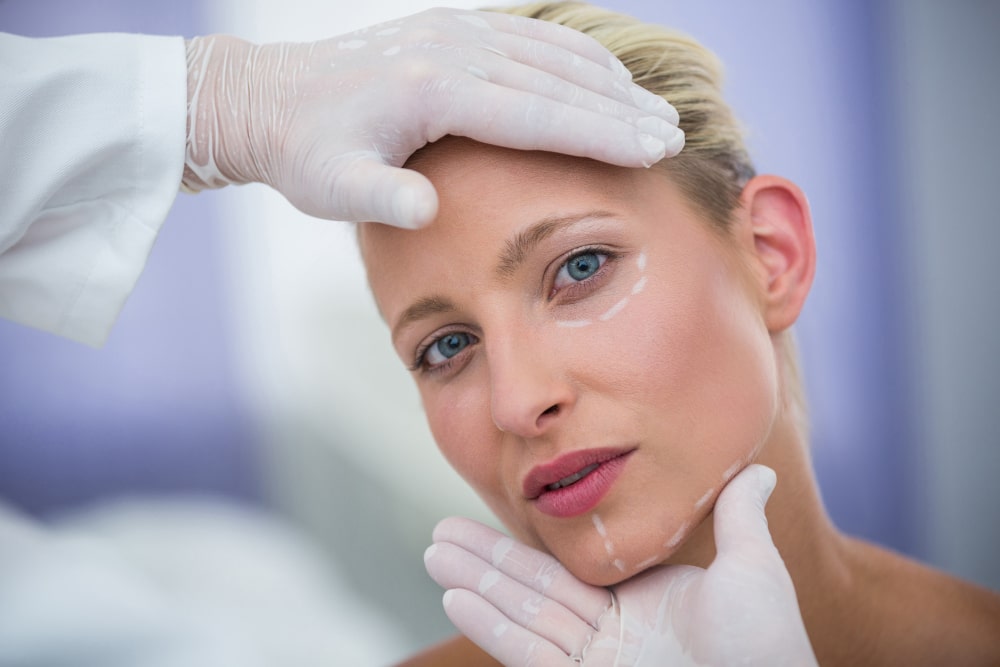If you’re looking to get rid of dark circles and bags under your eyes, lower eyelid surgery may be the solution for you! In this article, we’ll discuss everything you need to know about this procedure – from how it works to its risks and benefits. Get ready to learn more about how lower eyelid surgery could help keep those pesky dark circles and bags away for good!
Table of Contents
Introduction to lower eyelid surgery
Lower eyelid surgery, also called blepharoplasty, is a cosmetic procedure to improve the appearance of the lower eyelids. The surgery can remove excess skin and fat from the lower eyelids, which can make them look puffy or saggy. It can also help to correct wrinkles, fine lines, and other signs of aging in the lower eyelids.
Lower eyelid surgery is usually done as an outpatient procedure, meaning you won’t need to stay in the hospital overnight. The surgery takes about 1-2 hours to complete, and you’ll likely experience some swelling and bruising around your eyes for a few weeks afterwards. Most people see a noticeable improvement in their appearance after lower eyelid surgery, and the results are usually long-lasting.
If you’re considering lower eyelid surgery, be sure to consult with a board-certified plastic surgeon who has experience performing this type of procedure. They’ll be able to evaluate your individual case and give you a better idea of what to expect from the surgery.
Who is the ideal candidate for lower eyelid surgery?
The ideal candidate for lower eyelid surgery is someone who is in good general health, has realistic expectations, and is bothered by excess skin or fat around the lower eyelids. Lower eyelid surgery can be performed on patients who are either younger or older, but the best results are usually seen in patients who are between the ages of 35 and 60.
What are the benefits of lower eyelid surgery?
There are many benefits of lower eyelid surgery. This type of surgery can help to improve the appearance of the lower eyelid and make it look more youthful. It can also help to reduce the appearance of dark circles and bags under the eyes. In addition, this type of surgery can help to improve the function of the lower eyelid and make it easier to close the eye.
What should you consider before undergoing lower eyelid surgery?
There are a few things to consider before undergoing lower eyelid surgery. First, you should consult with a board certified plastic surgeon to discuss your expectations and desired results. It is important to have realistic expectations for the outcome of the surgery. Second, you should be aware of the risks and potential complications associated with any surgery, including lower eyelid surgery. Be sure to ask your surgeon about these risks and how they can be minimized. Finally, you should be prepared for some downtime after the surgery, as you will likely experience some bruising and swelling. Follow your surgeon’s instructions for post-operative care to help ensure a successful outcome.
The procedure and recovery process for lower eyelid surgery
Lower eyelid surgery, also called blepharoplasty, is a cosmetic procedure to improve the appearance of the lower eyelids. The goal of lower eyelid surgery is to remove excess skin and fat from the lower eyelids to create a more youthful appearance.
The procedure is typically performed under local anesthesia with sedation, meaning you will be awake but relaxed during the surgery. Incisions are made along the natural lines of your skin, usually just below the lash line. Through these incisions, excess skin and fat are removed and the muscles and tissue are tightened. The incisions are then closed with stitches or surgical tape.
You can expect some swelling and bruising after your surgery, which will typically resolve within two weeks. You may also have some temporary numbness or itching around the incision site. It’s important to follow your surgeon’s instructions for care after surgery, including using ice packs and sleeping with your head elevated to help reduce swelling. Most people take approximately two weeks off from work or other activities before resuming their normal routine.
If you have any questions or concerns about lower eyelid surgery, be sure to talk to your surgeon beforehand. They can answer any questions you have and help you make an informed decision about whether this procedure is right for you
Risks and complications associated with lower eyelid surgery
As with any surgery, there are risks and complications associated with lower eyelid surgery. These include but are not limited to:
* Bleeding
* Infection
* Scarring
* Dry eyes
* Difficulty closing the eye
* Fluid retention
* Change in vision
* Blindness
If you experience any of these complications after lower eyelid surgery, it is important to contact your surgeon immediately.
Conclusion
Lower eyelid surgery can be an effective and safe way for people to reduce the appearance of dark circles, bags and wrinkles under their eyes. It is important to understand the risks associated with any type of surgery before proceeding, so it is always best to consult a medical professional who can help you decide if this type of procedure is right for you. With proper preparation, lower eyelid surgery can give you the youthful look that many are striving for!


